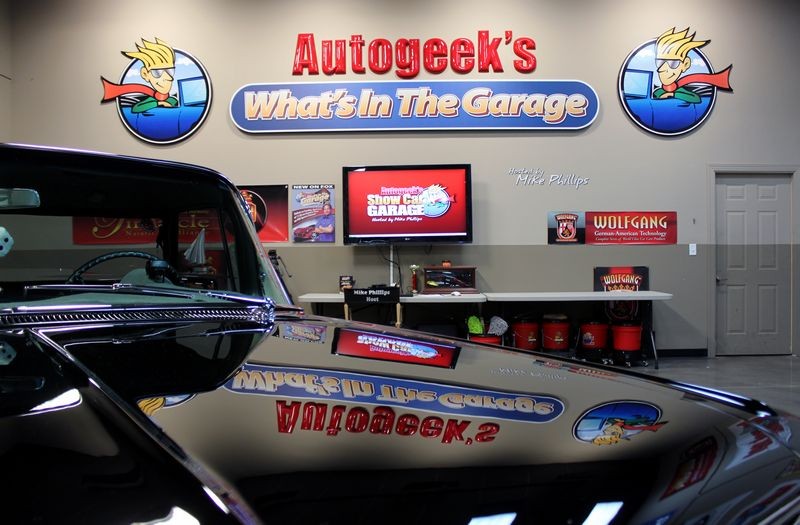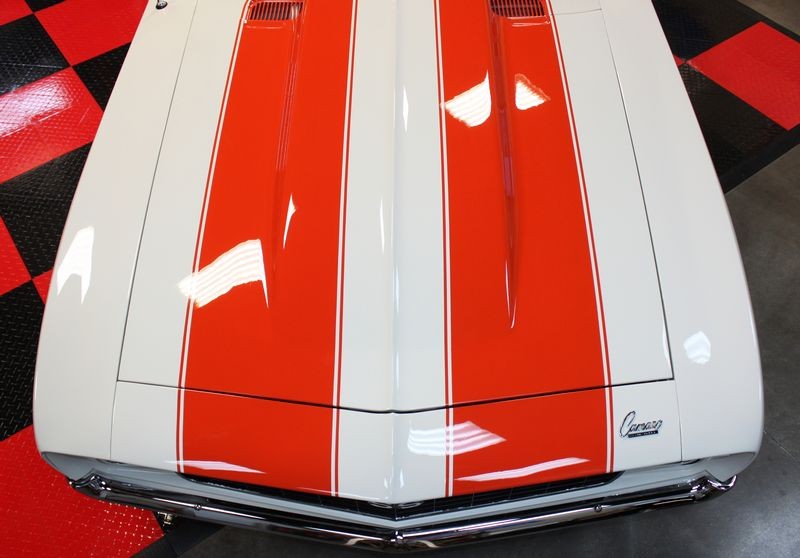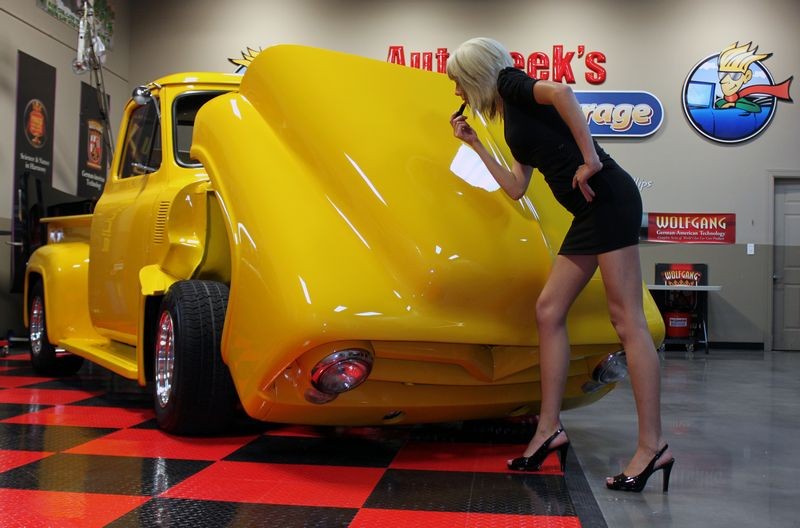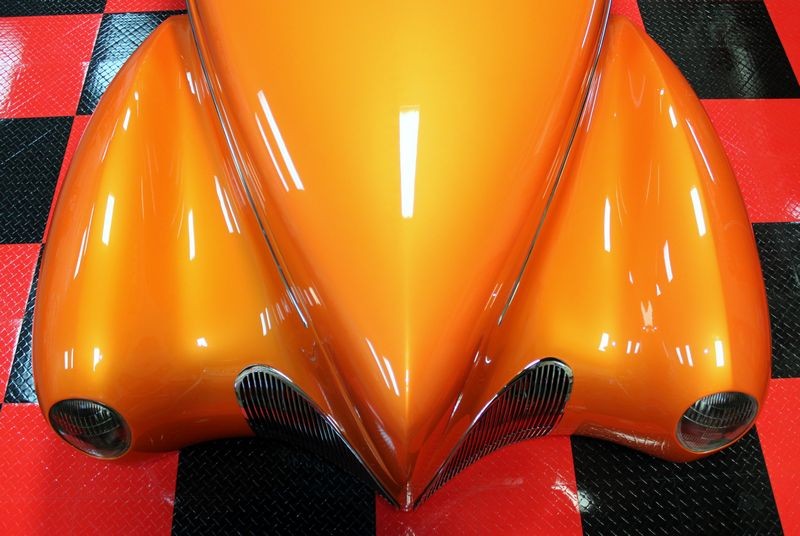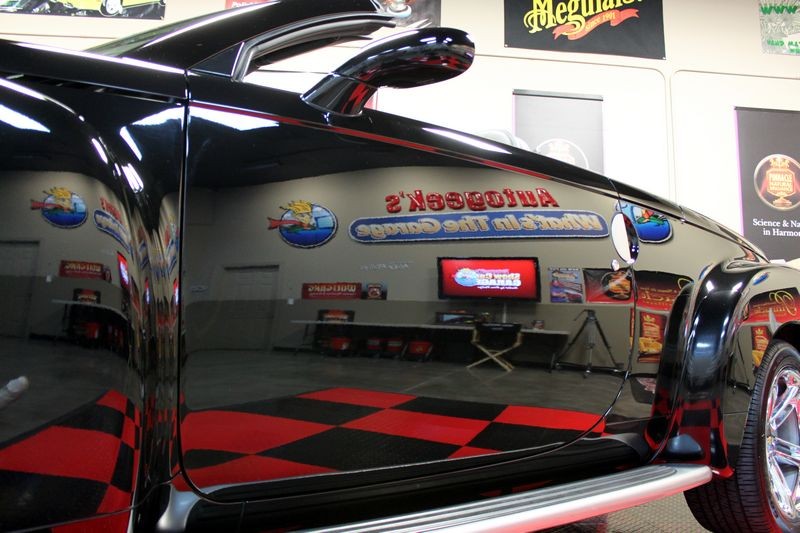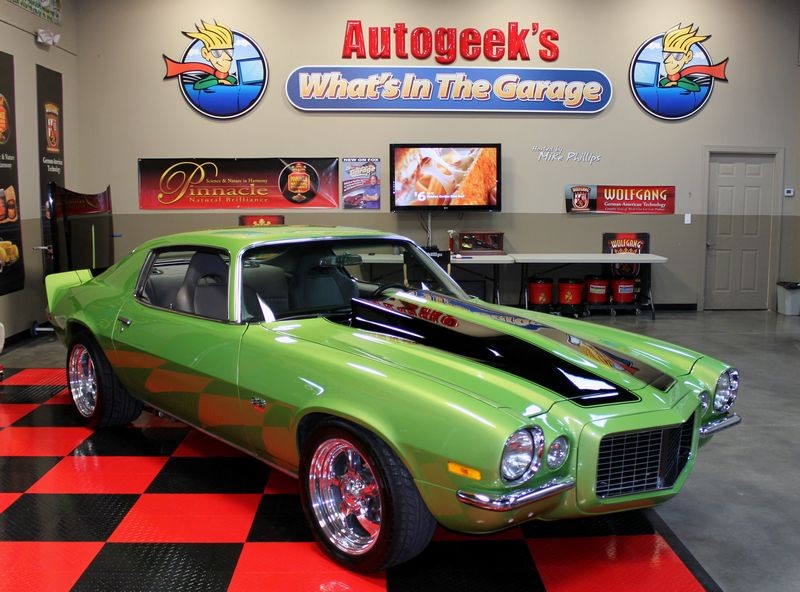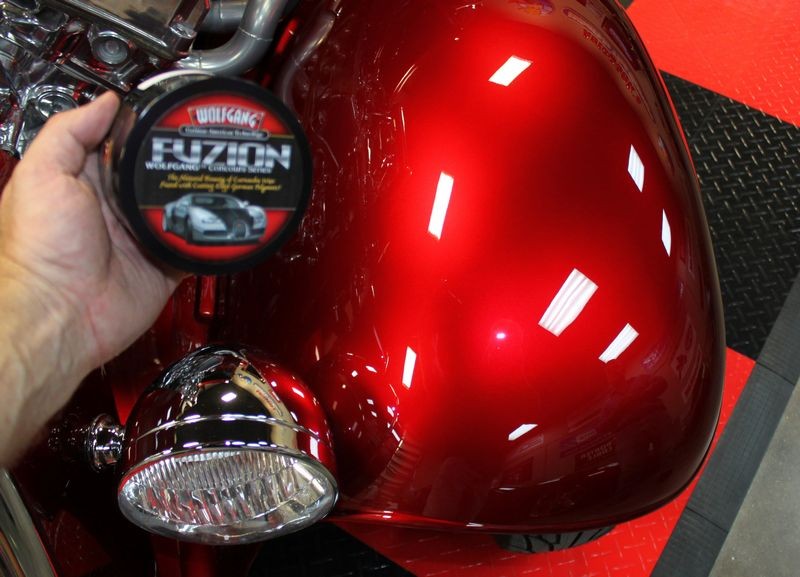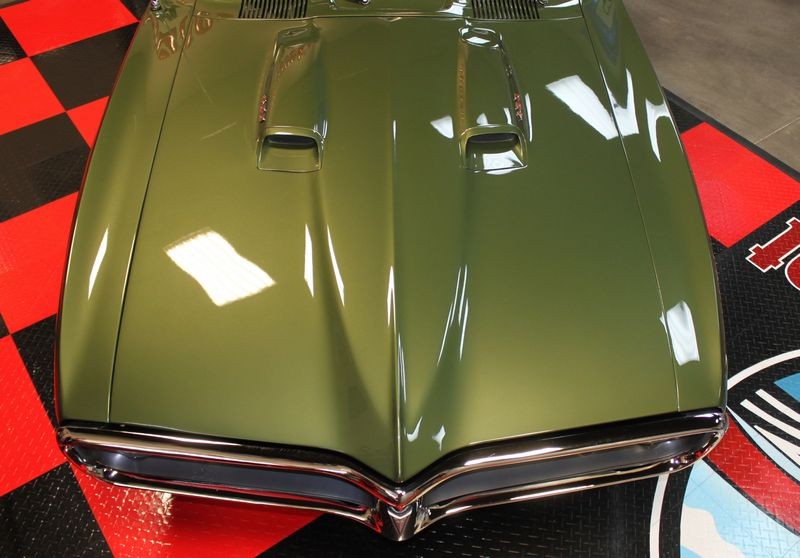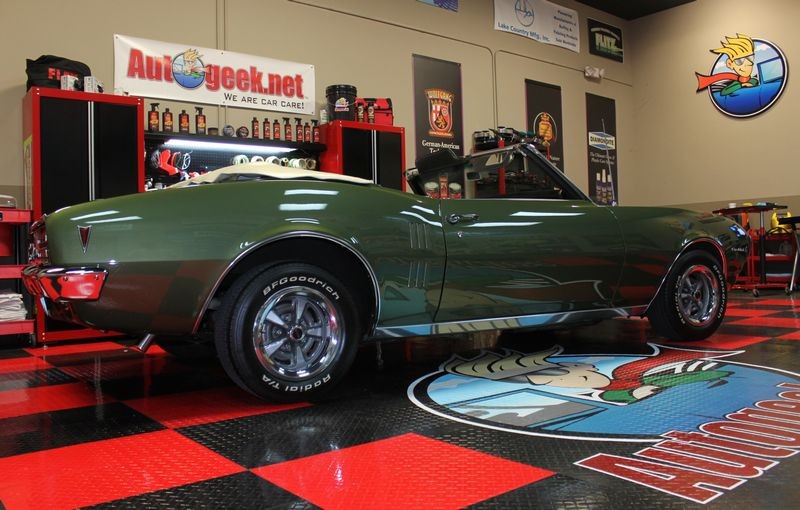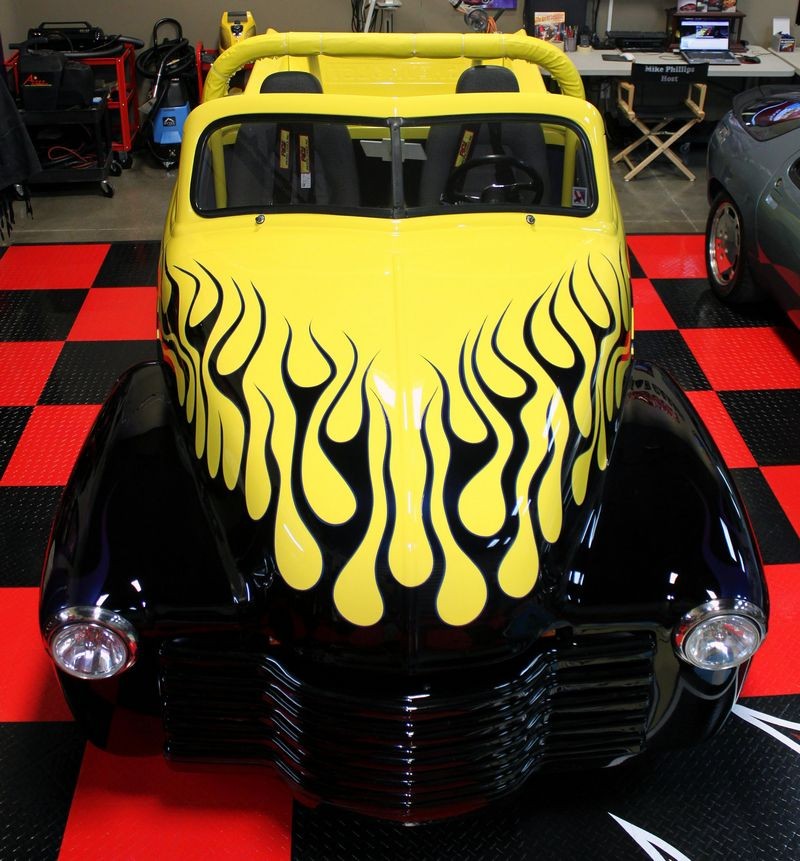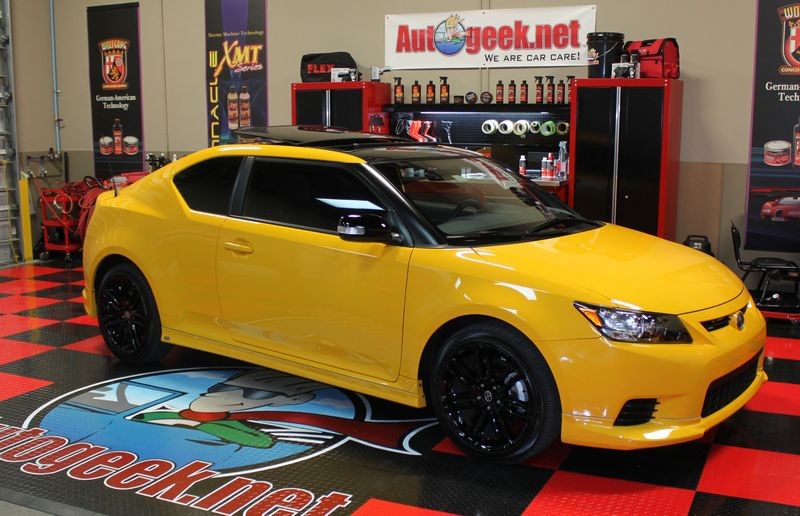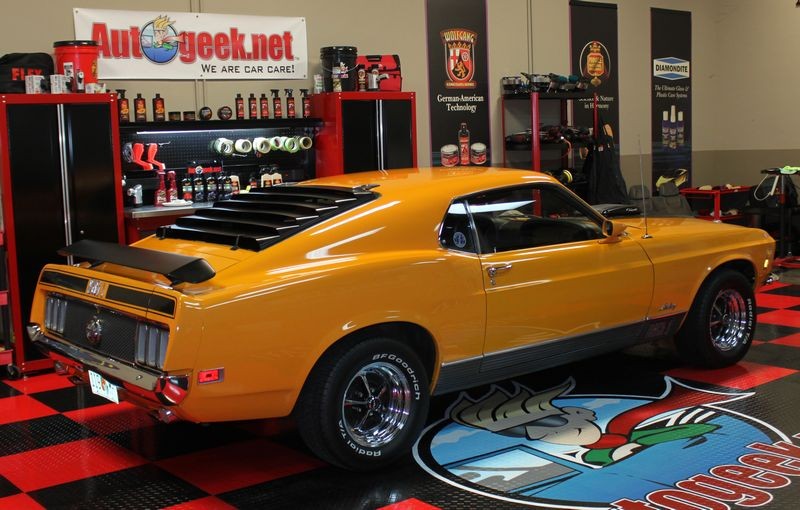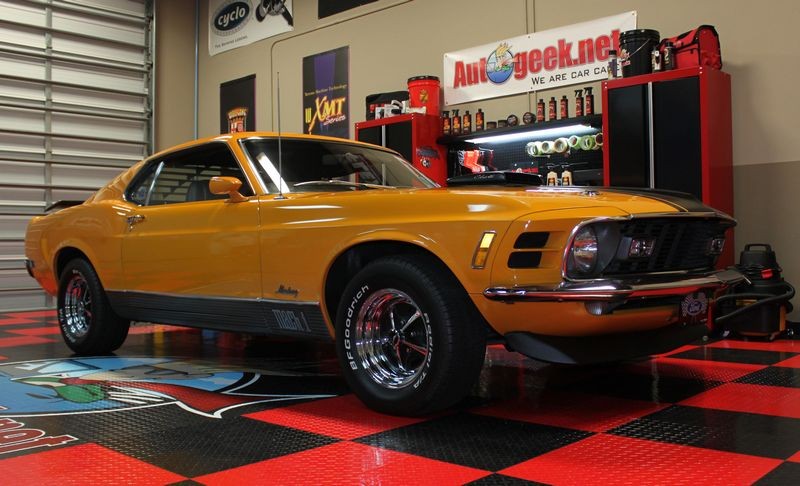Mike Phillips
Active member
- Dec 5, 2022
- 51,004
- 6
Paint Condition Categories
This is a chapter in my how-to book. It's just one little nugget of information you'll find in the book.
Page 37 - Paint Condition Categories
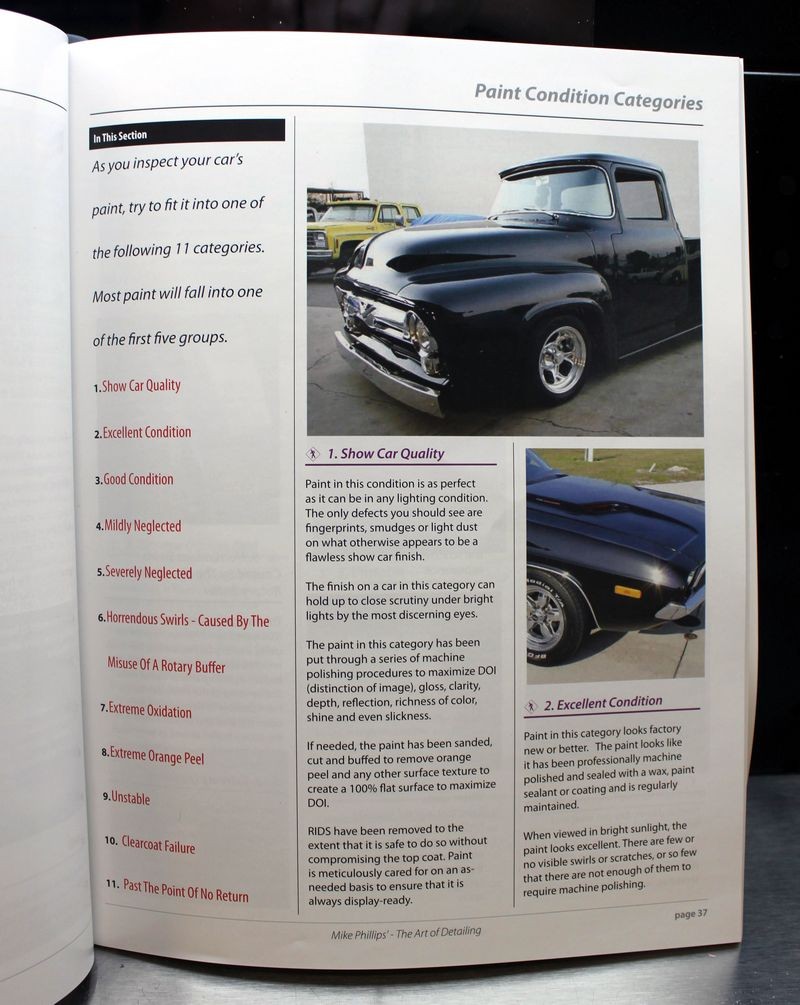
Using the guide below, inspect the paint on your car or cars, trucks, SUVs, etc. And then post which category you think each vehicle matches.
1: Show Car Quality
Paint in this condition is as perfect as it can be in any lighting condition. The only defects you should see are fingerprints, smudges or light dust on what otherwise appears to be a flawless show car finish.
The finish on a car in this category can hold up to close scrutiny under bright lights by the most discerning eyes.
The paint in this category has been put through a series of machine polishing procedures to maximize D.O.I, gloss, clarity, depth, reflection, richness of color, shine and even slickness.
If needed, the paint has been sanded, cut and buffed to remove orange peel and any other surface texture to create a 100% flat surface to maximize D.O.I.
RIDS have been removed to the extent that it is safe to do so without compromising the top coat. Paint is meticulously cared for on an as needed basis to ensure that it is always display ready.
2: Excellent Condition
The paint in this category looks factory new or better than factory new.
The paint looks like it has been professionally machine polished and sealed with a wax, paint sealant or coating and is regularly maintained.
When viewed in bright sunlight, the paint looks excellent, that is there are few or no visible swirls or scratches or so few that there's not enough of them to require machine polishing.
The paint has few or no swirls, scratches or any other visible paint defects outside of RIDS.
3: Good Condition
Light swirls, scratches, water spots and oxidation.
When viewed in bright sunlight, the paint should look pretty good overall except that it has light or shallow looking cobweb swirls and scratches throughout the paint. Any water spot problems should be shallow imprint type stains common to Type I Water Spots, certainly not deep craters like Type II or Type III where the paint is physically stained.
Paint in this condition would require one or two polishing steps before a finishing wax could be applied to bring the quality to Excellent or Show Car Quality.
4: Mildly Neglected
Normal day-in, day-out wear-n-tear and minimal appearance maintenance outside of the occasional car wash. Paint in this condition has medium to light swirls, scratches, water spots and oxidation.
Cobweb Swirls and Scratches
When viewed in bright, overhead sunlight there are cobweb swirls and scratches evenly instilled throughout the entire finish but they're likely instilled through improper washing and drying techniques, which means the depth of these defects won't be as deep as the swirls and scratches in a severely neglected finish. The swirls are not inflicted by a rotary buffer. The remedy is still the same except you might be able to use a less aggressive pad or product.
Water Spots
Paint with Type I Water Spots or shallow Type II Water Spots that are more imprints than they are craters falls into this category.
Oxidation, Staining and Surface Impurities
If the car being evaluated is a daily driver, is parked outside 24/7 and has not been regularly polished and/or waxed for a few years then chances are good it has light oxidation and staining of the paint with some type of roadgrime or a build-up of impurities or some type of topical contamination that does not wash or wipe-off.
5: Severely Neglected
Paint in this condition has deep swirls, scratches, water spots and oxidation. Paint in this condition has normal day-in, day-out wear-n-tear plus no real regular maintenance. Vehicles in this category are rarely washed on a regular basis and when they are washed they are washed improperly or taken through automatic car wash.
Cobweb Swirls and Scratches
Paint that is severely neglected means that when viewed in bright, overhead sunlight, there are so many swirls and scratches that the paint has an overall hazy appearance which blocks your view of the true color.
Water Spots
Paint that is in the severely neglected category can have Type I, Type II and Type III water spots on all horizontal panels and even the vertical panels if caused by a sprinkler or some type of water spray.
Severe Oxidation
Paint in this category has oxidized to the point where the surface has a uniform dull appearance to the horizontal surfaces and to some extent the vertical panels. Clear coats do oxidize but usually slower than single stage paints and don't normally get the whitish, chalky appearance with a rough texture common to old, neglected single stage lacquers and enamels.
6: Horrendous Swirls - Caused by the misuse of a rotary buffer
This category is primarily for cars that have been improperly buffed-out using a rotary buffer leaving the finish inflicted with rotary buffer swirls, holograms or buffer trails.
(Whatever term you like, they all mean the same thing).
The severity of the swirls can range from shallow to deep depending upon the pad and product used with the rotary buffer as well as technique or lack thereof.
The normal three culprits for paint in this condition are,
Dealer Installed Swirl Option
Body shop Installed Swirl Option
Detailer Installed Swirl Option
Sad but true, the people in this industry that are supposed to know how to properly buff out a car normally either don't know or don't care. The results are the same and that's a swirled out car finish that someone else will have to undo.
7: Extreme Oxidation
Paint is this category is primarily associated with traditional single stage lacquer and enamel paints and normally found cars built before 1980. Extreme Oxidation means the paint has deteriorated to the point that it has a chalky, whitish appearance.
Paint in this category is typically antique or original. It can be a re-paint, but it would be an older re-repaint. Paint with extreme oxidation can be saved by carefully removing the dead, oxidized paint and rejuvenating with polishing oils the remaining paint. After polishing the color is restored and remains even when exposed to sunlight. If the color fades away then this is an indicator that the paint has become unstable.
8: Extreme Orange Peel
Paint in this category is primarily re-paints from body shops, dealerships or do-it-yourselfer garage paint jobs. It doesn't normally include factory orange peel because factory orange peel is a given for new cars and truck and due to how thin the top coat is on a factory paint job there's a certain amount of risk you have to accept if you choose to remove the factory orange peel while re-paints will tend to have enough material that the problem can be safely corrected via sanding and buffing.
9: Unstable
This category is for older, single stage paints that have been exposed to the sun for a long enough period of time that the pigments have become unstable. That is even if you remove the oxidation and gorge the paint with some type of polishing oils, any original color that is restored is only a temporary fix and when the paint is exposed to the sun or after a few days pass the color fades back to where it was before you started.
10: Clear Coat Failure
Clear coat failure is the point in which the top clear layer of paint has either de-laminated from the basecoat and is peeling off. Clear coat failure can also be when the clear layer of paint has deteriorated to the point where it's turning a whitish color in the beginning stages to full blown deterioration where it has turned white and is flaking off and the car look like it has a severe rash.
11: Past the point of no return
Paint in this condition will be a paint job that falls into one of the above categories but it is so far gone that nothing you pour out of a bottle or scoop out of a can from any company will fix it.
Using this guide
Every car you inspect and evaluate will fall into one of the above categories of paint condition. In order to reach your goal you first must know where you're starting from, so wash and dry your car and then inspect the paint visually using at least two good sources of bright light and tactically with your sense of touch using your clean hand.
Visual Inspection
Using the Brinkmann Swirl Finder Light to Inspect your car's finish

Tactile Inspection - Using your sense of touch
The Baggie Test - How to inspect for above surface bonded contaminants

How to use the Sun to inspect paint
One of the best ways to inspect your car's finish for swirls is to use bright, overhead sunlight. Of course this means you need to have a sunny day and usually a time of year like spring or summer when the sun is high overhead around noon time.
Move your car out into the open, away from things like tall trees and buildings that cast a shadow and then stand on the side of the car that allows you to see the sun reflecting off a body panel like the hood, trunk lid or vertical panel.
The sun will easily show you if there are in fact any swirls or scratches in your car's finish.
The sun shining down your car car should look like these examples.
Swirls on the hood of a 1967 Firebird
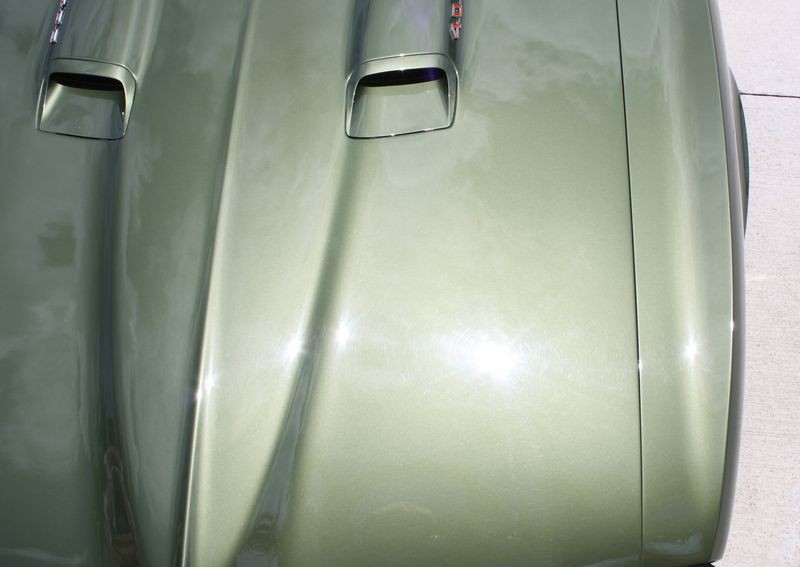

B-Pillar - Vertical Panel between back window and back side window

Swirls on the door of a 1954 F100 Pickup


Swirls on the driver's side fender of a 1939 Lincoln Zephyr
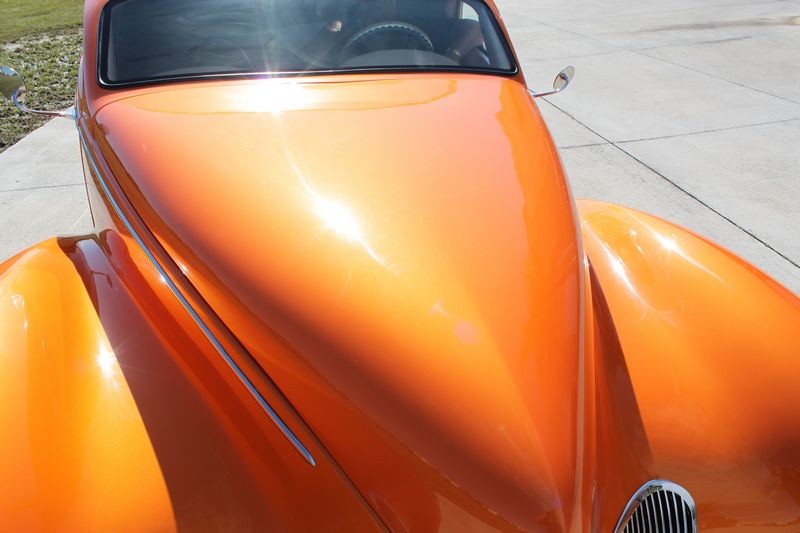

Video Examples
Here's some video examples of how to inspect your paint using the sun after you have washed and dried your car.
1954 Ford F-100 with swirls and holograms
2012 High Voltage Yellow Scion - Before Condition - Swirls & Scratches
Before - Sun shots of all the swirls and scratches
The Art of Detailing
Page 37 was taken from The Art of Detailing, which shows you step by step how to remove swirls, scratches, water spots and oxidation to create a true show car finish via machine polishing the safe and easy way.
Paperback
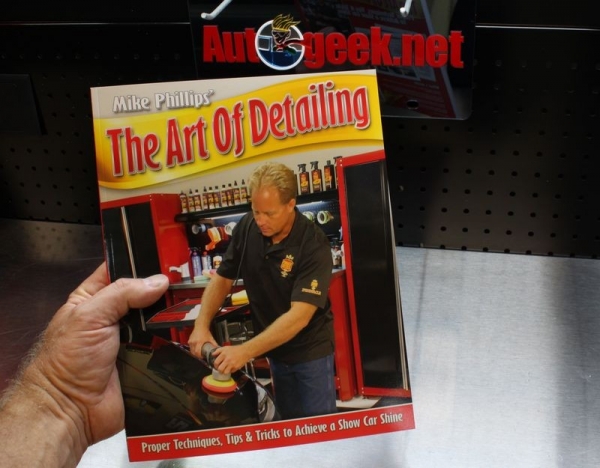
E-book
(Displayed on iPad - iPad not included)
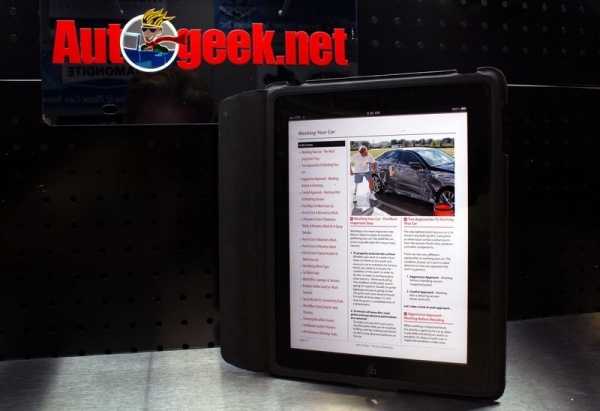
The Art Of Detailing Audio Book
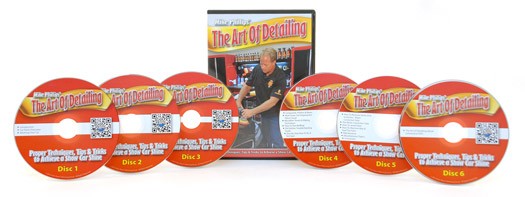

This is a chapter in my how-to book. It's just one little nugget of information you'll find in the book.
Page 37 - Paint Condition Categories

Using the guide below, inspect the paint on your car or cars, trucks, SUVs, etc. And then post which category you think each vehicle matches.
1: Show Car Quality
Paint in this condition is as perfect as it can be in any lighting condition. The only defects you should see are fingerprints, smudges or light dust on what otherwise appears to be a flawless show car finish.
The finish on a car in this category can hold up to close scrutiny under bright lights by the most discerning eyes.
The paint in this category has been put through a series of machine polishing procedures to maximize D.O.I, gloss, clarity, depth, reflection, richness of color, shine and even slickness.
If needed, the paint has been sanded, cut and buffed to remove orange peel and any other surface texture to create a 100% flat surface to maximize D.O.I.
RIDS have been removed to the extent that it is safe to do so without compromising the top coat. Paint is meticulously cared for on an as needed basis to ensure that it is always display ready.
2: Excellent Condition
The paint in this category looks factory new or better than factory new.
The paint looks like it has been professionally machine polished and sealed with a wax, paint sealant or coating and is regularly maintained.
When viewed in bright sunlight, the paint looks excellent, that is there are few or no visible swirls or scratches or so few that there's not enough of them to require machine polishing.
The paint has few or no swirls, scratches or any other visible paint defects outside of RIDS.
3: Good Condition
Light swirls, scratches, water spots and oxidation.
When viewed in bright sunlight, the paint should look pretty good overall except that it has light or shallow looking cobweb swirls and scratches throughout the paint. Any water spot problems should be shallow imprint type stains common to Type I Water Spots, certainly not deep craters like Type II or Type III where the paint is physically stained.
Paint in this condition would require one or two polishing steps before a finishing wax could be applied to bring the quality to Excellent or Show Car Quality.
4: Mildly Neglected
Normal day-in, day-out wear-n-tear and minimal appearance maintenance outside of the occasional car wash. Paint in this condition has medium to light swirls, scratches, water spots and oxidation.
Cobweb Swirls and Scratches
When viewed in bright, overhead sunlight there are cobweb swirls and scratches evenly instilled throughout the entire finish but they're likely instilled through improper washing and drying techniques, which means the depth of these defects won't be as deep as the swirls and scratches in a severely neglected finish. The swirls are not inflicted by a rotary buffer. The remedy is still the same except you might be able to use a less aggressive pad or product.
Water Spots
Paint with Type I Water Spots or shallow Type II Water Spots that are more imprints than they are craters falls into this category.
Oxidation, Staining and Surface Impurities
If the car being evaluated is a daily driver, is parked outside 24/7 and has not been regularly polished and/or waxed for a few years then chances are good it has light oxidation and staining of the paint with some type of roadgrime or a build-up of impurities or some type of topical contamination that does not wash or wipe-off.
5: Severely Neglected
Paint in this condition has deep swirls, scratches, water spots and oxidation. Paint in this condition has normal day-in, day-out wear-n-tear plus no real regular maintenance. Vehicles in this category are rarely washed on a regular basis and when they are washed they are washed improperly or taken through automatic car wash.
Cobweb Swirls and Scratches
Paint that is severely neglected means that when viewed in bright, overhead sunlight, there are so many swirls and scratches that the paint has an overall hazy appearance which blocks your view of the true color.
Water Spots
Paint that is in the severely neglected category can have Type I, Type II and Type III water spots on all horizontal panels and even the vertical panels if caused by a sprinkler or some type of water spray.
Severe Oxidation
Paint in this category has oxidized to the point where the surface has a uniform dull appearance to the horizontal surfaces and to some extent the vertical panels. Clear coats do oxidize but usually slower than single stage paints and don't normally get the whitish, chalky appearance with a rough texture common to old, neglected single stage lacquers and enamels.
6: Horrendous Swirls - Caused by the misuse of a rotary buffer
This category is primarily for cars that have been improperly buffed-out using a rotary buffer leaving the finish inflicted with rotary buffer swirls, holograms or buffer trails.
(Whatever term you like, they all mean the same thing).
The severity of the swirls can range from shallow to deep depending upon the pad and product used with the rotary buffer as well as technique or lack thereof.
The normal three culprits for paint in this condition are,
Dealer Installed Swirl Option
Body shop Installed Swirl Option
Detailer Installed Swirl Option
Sad but true, the people in this industry that are supposed to know how to properly buff out a car normally either don't know or don't care. The results are the same and that's a swirled out car finish that someone else will have to undo.
7: Extreme Oxidation
Paint is this category is primarily associated with traditional single stage lacquer and enamel paints and normally found cars built before 1980. Extreme Oxidation means the paint has deteriorated to the point that it has a chalky, whitish appearance.
Paint in this category is typically antique or original. It can be a re-paint, but it would be an older re-repaint. Paint with extreme oxidation can be saved by carefully removing the dead, oxidized paint and rejuvenating with polishing oils the remaining paint. After polishing the color is restored and remains even when exposed to sunlight. If the color fades away then this is an indicator that the paint has become unstable.
8: Extreme Orange Peel
Paint in this category is primarily re-paints from body shops, dealerships or do-it-yourselfer garage paint jobs. It doesn't normally include factory orange peel because factory orange peel is a given for new cars and truck and due to how thin the top coat is on a factory paint job there's a certain amount of risk you have to accept if you choose to remove the factory orange peel while re-paints will tend to have enough material that the problem can be safely corrected via sanding and buffing.
9: Unstable
This category is for older, single stage paints that have been exposed to the sun for a long enough period of time that the pigments have become unstable. That is even if you remove the oxidation and gorge the paint with some type of polishing oils, any original color that is restored is only a temporary fix and when the paint is exposed to the sun or after a few days pass the color fades back to where it was before you started.
10: Clear Coat Failure
Clear coat failure is the point in which the top clear layer of paint has either de-laminated from the basecoat and is peeling off. Clear coat failure can also be when the clear layer of paint has deteriorated to the point where it's turning a whitish color in the beginning stages to full blown deterioration where it has turned white and is flaking off and the car look like it has a severe rash.
11: Past the point of no return
Paint in this condition will be a paint job that falls into one of the above categories but it is so far gone that nothing you pour out of a bottle or scoop out of a can from any company will fix it.
Using this guide
Every car you inspect and evaluate will fall into one of the above categories of paint condition. In order to reach your goal you first must know where you're starting from, so wash and dry your car and then inspect the paint visually using at least two good sources of bright light and tactically with your sense of touch using your clean hand.
Visual Inspection
Using the Brinkmann Swirl Finder Light to Inspect your car's finish

Tactile Inspection - Using your sense of touch
The Baggie Test - How to inspect for above surface bonded contaminants

How to use the Sun to inspect paint
One of the best ways to inspect your car's finish for swirls is to use bright, overhead sunlight. Of course this means you need to have a sunny day and usually a time of year like spring or summer when the sun is high overhead around noon time.
Move your car out into the open, away from things like tall trees and buildings that cast a shadow and then stand on the side of the car that allows you to see the sun reflecting off a body panel like the hood, trunk lid or vertical panel.
The sun will easily show you if there are in fact any swirls or scratches in your car's finish.
The sun shining down your car car should look like these examples.
Swirls on the hood of a 1967 Firebird


B-Pillar - Vertical Panel between back window and back side window

Swirls on the door of a 1954 F100 Pickup


Swirls on the driver's side fender of a 1939 Lincoln Zephyr


Video Examples
Here's some video examples of how to inspect your paint using the sun after you have washed and dried your car.
1954 Ford F-100 with swirls and holograms
2012 High Voltage Yellow Scion - Before Condition - Swirls & Scratches
Before - Sun shots of all the swirls and scratches
The Art of Detailing
Page 37 was taken from The Art of Detailing, which shows you step by step how to remove swirls, scratches, water spots and oxidation to create a true show car finish via machine polishing the safe and easy way.
Paperback

E-book
(Displayed on iPad - iPad not included)

The Art Of Detailing Audio Book


